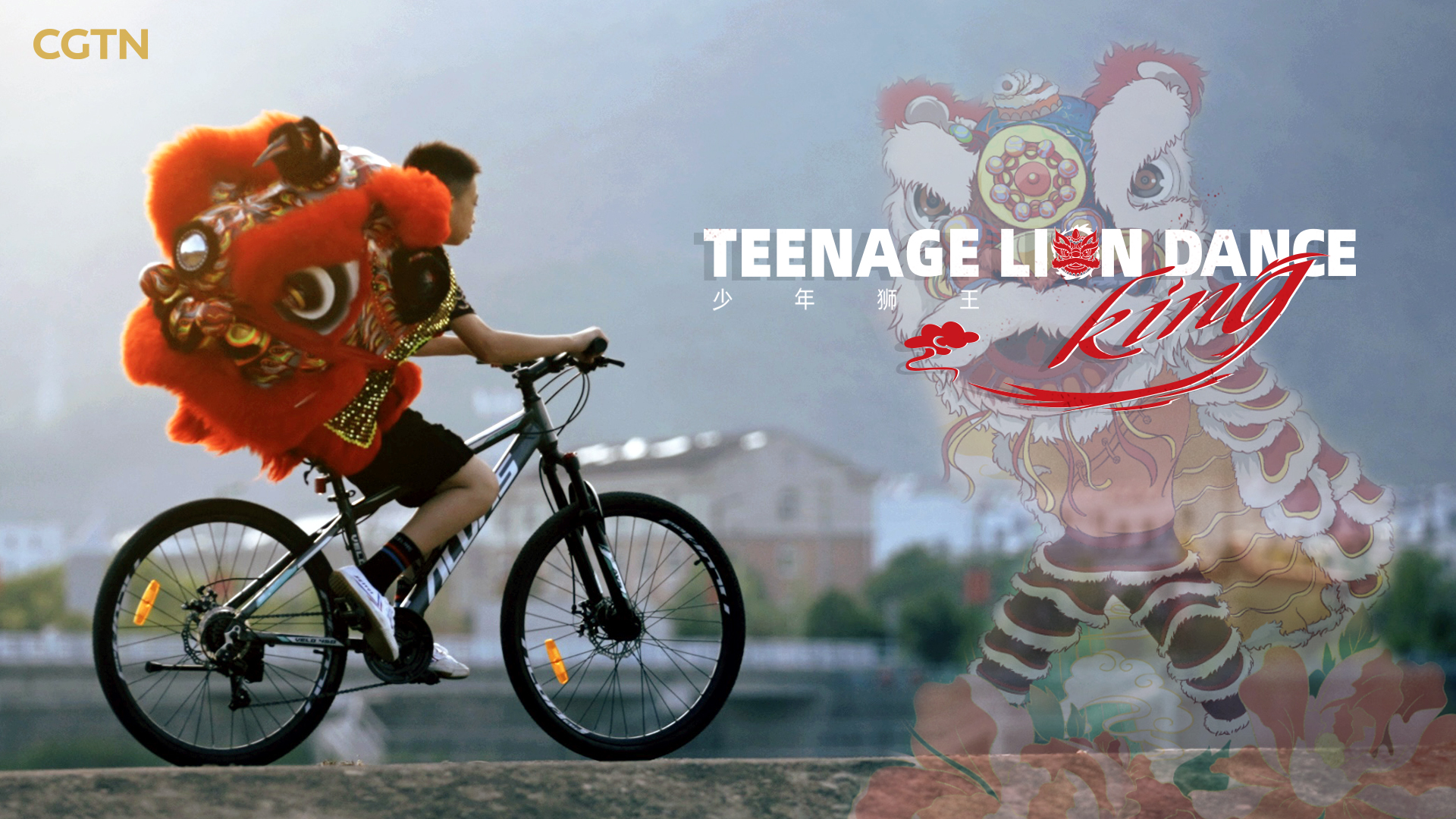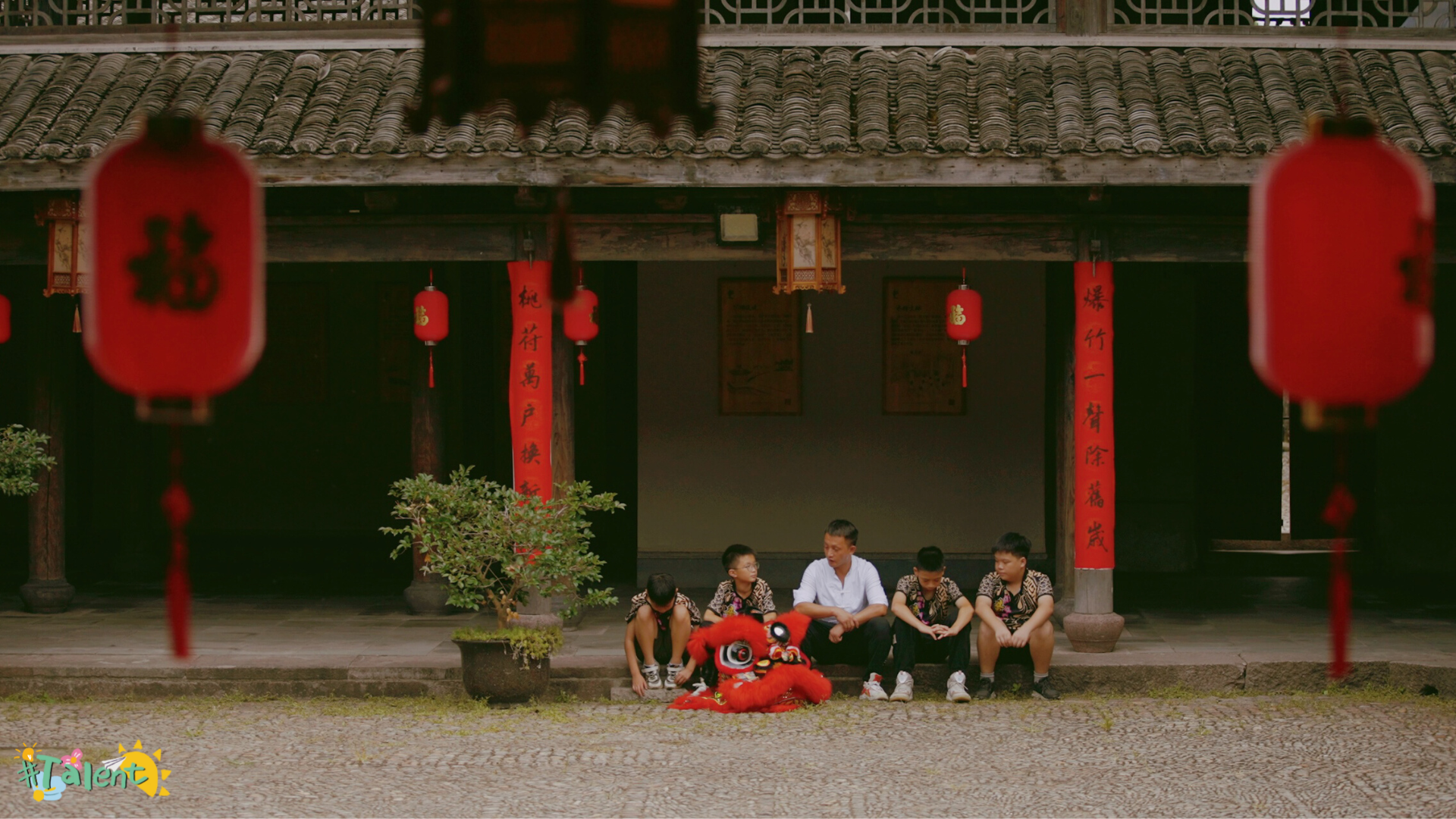The Chinese lion dance is an art form that combines acrobatics, dance, folk music and embroidery. The southern-style lion dance was a staple in the ancient town of Qiantong before the costume faded in the early 20th century. However, now the tradition has been revived by some incredible young talents of this town.
04:55

In Qiantong, there is a town fair. Large banners are hung, speeches are made, and then everyone immediately leaves the streets to make room for the event's grand finale: the Chinese lion dance.
A team of lions proudly enters, each of them operated by two dancers. The lion heads are festive looking, and little children laugh when the lion turns their fluffy eyelashes towards them. The lion tails look steady yet nimble. The crowd applauds when the tail dancers lift their partners up in the air. The lions each have a different color, turning the ancient Qiantong streets into a roaring flow of festivity.
As the drum stops, people cheer, and the lion dancers take off their costumes. The cheering became a sound of surprise: the dancers were primary school children!
It all started with coach Tong Panfeng, a computer shop owner turned lion dance coach. By chance, Tong discovered that the lion dance was a popular tradition that had faded in this ancient town. Even his grandfather was a professional lion dancer. With a fire in his belly, Tong traveled across China to learn the skills of lion dancing, aiming to bring it back.
The Chinese lion dance is an important part of Chinese culture. The dance can be seen during festivals and celebrations all around the world. The lion symbolizes power, wisdom, and strength. People perform lion dances to bring good fortune and chase away evil spirits.
Around the same time, coach Tong Panfeng found his passion for lion dancing, and the town's primary school also started to consider introducing intangible cultural heritages into the curriculum. So, when Tong Panfeng returned with his new skills, he was employed by the school as a PE teacher, and the training started.

Tong Panfeng talks to young lion dancers. /CGTN
Tong Panfeng talks to young lion dancers. /CGTN
Zhang Zhenhao, a boy from the young generation of the town, used to have the unfavorable nickname 'crybaby.' He cried a lot: when he bumped his knee on the town's ancient pebble roads or lost at a game with his friends.
It seemed like an ordinary day at primary school when Zhang was 10. That was the day coach Tong came to pick his lion dancers. The students started training for 2 hours every Thursday and have continued their hard work for three years. Now, 13-year-old Zhang Zhenhao is a well-mannered young man whose eyes sparkle when talking about the lion dance.
"Zhang Zhenhao is a student I feel proud of," coach Tong nodded. "He has this spirit that just doesn't give up."
In the performance, the lion dance is lively and exciting. But everyday training is a lot of drilling and repetition. The dance pairs must keep practicing jumping on wooden tables and chairs and develop harmony between their movements. "Whenever I put on the lion head, I feel like I am a lion, and I can't give up," said the young boy. That lion spirit is what kept coach Tong going, and now he passed it to his team of young talents.

The current lion dance team of Qiantong ancient town. /CGTN
The current lion dance team of Qiantong ancient town. /CGTN
Zhang Zhenhao won the little lion dance king trophy in a competition and moved to secondary school. But he still helps with the team and takes younger kids under his wing.
As the town fair came to an end, Coach Tong congratulated his students for yet another great performance. "I want to be a lion dance coach when I'm older," Zhang Zhenhao told his friends. The beautiful lion costumes shine under the sun as if they knew they'll always have a place here in Qiantong.